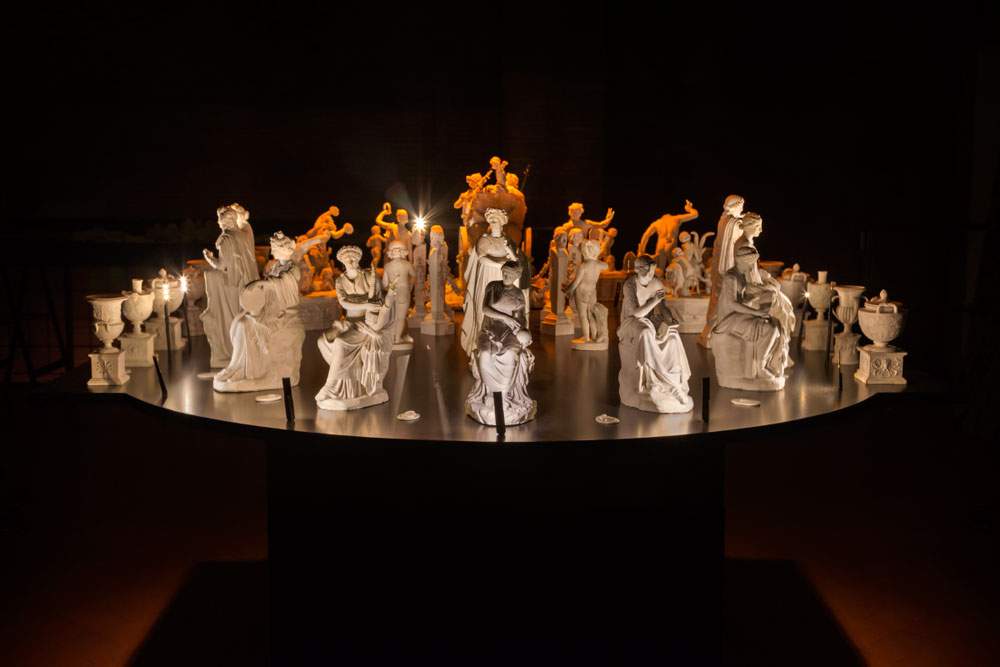Classics goes pop at Rome's Crypta Balbi and Palazzo Massimo
Set up in two exhibition venues in Rome, in the Crypta Balbi and the Palazzo Massimo, the exhibition Il classico si fa pop. Of Excavations, Copies and Other Messes, running until April 7, 2019.
The exhibition was conceived by Mirella Serlorenzi in collaboration with Marcello Barbanera and Antonio Pinelli and is promoted by the National Roman Museum with Electa.
“An exhibition that is designed to be disseminated to the general public through a narrative clarity that has benefited extensively from technology, to make manifest themes and content that would otherwise have remained hidden,” says Daniela Porro, director of the National Roman Museum.
The exhibition resorts to projections and the play of light and shadow to multiply, scan, accentuate forms, imitations, multiples, grafts and transformations.
On display are full-round statuettes made of biscuit, a material that appeared more similar to marble and made the objects closer to Roman-era originals, by Volpato, an artist and engraver who was a friend of Canova and Angelica Kaufmann. Precious specimens are on display, as are his desserts, also called triumphs, consisting of figurines that made up a sumptuous centerpiece. The Bassano del Grappa Museum lends the majestic Dessert of Bacchus and Ariadne, originally composed of ninety-eight pieces. Accompanying Volpato’s creations are other fashionable productions at the time of the Grand Tour, such as micromosaic objects and furnishings with views of Roman monuments.
At Palazzo Massimo, the theme of artistic seriality in all its complex variety is particularly highlighted. The Discobolos themselves, preserved here, demonstrate even for the classical age the existence of the reproduction of works of art from Greek originals. About 20 ancient examples have come down to us, and five of them are on display to highlight the concept of multiplication. Even today, the Discobolus remains a powerful image in contemporary culture, as evidenced by the sculptural torso photographed by Mapplethorpe. Likewise, theSleeping Hermaphrodite, a Roman-era copy of a Hellenistic-era figure, inspired both Canova and Francesco Vezzoli. Ancient model, neoclassical and contemporary versions face each other, with distant meanings.
For info: www.museonazionaleromano.beniculturali.it
Hours: 9 a.m. to 7:45 p.m. Closed Mondays.
Tickets: Full 15 euros, reduced 9 euros (valid 3 days, allows admission to all venues of the National Roman Museum - Crypta Balbi, Palazzo Massimo, Palazzo Altemps, Baths of Diocletian - and the current exhibition)
 |
| Classics goes pop at Rome's Crypta Balbi and Palazzo Massimo |
Warning: the translation into English of the original Italian article was created using automatic tools. We undertake to review all articles, but we do not guarantee the total absence of inaccuracies in the translation due to the program. You can find the original by clicking on the ITA button. If you find any mistake,please contact us.



























